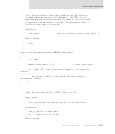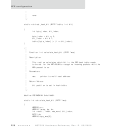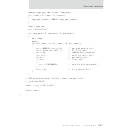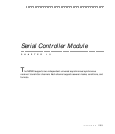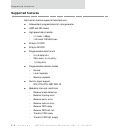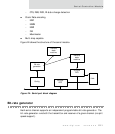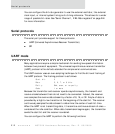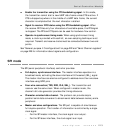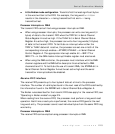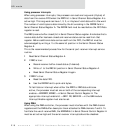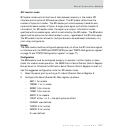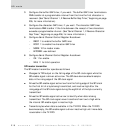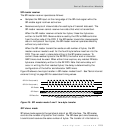
Serial protocols
212
NS7520 Hardware Reference, Rev. D 03/2006
You can configure the bit-rate generator to use the external oscillator, the external
clock input, or internal system timing as its timing reference. This allows for a wider
range of possible bit-rates. See "Serial Channel 1, 2 Bit-Rate registers" on page 244
for more information.
Serial protocols
The serial port provides support for these protocols:
UART (Universal Asynchronous Receiver Transmitter)
SPI
UART mode
Many applications require a simple mechanism for sending low-speed information
between two pieces of equipment. The universal asynchronous receiver transmitter
(UART) protocol is the de facto standard for simple serial communications.
The UART receiver uses an over-sampling technique to find the bit-level framing of
the UART protocol. The framing protocol is as follows:
Start bit: 0
Data: 5, 6, 7, or 8 bits
Parity: Odd, even, or no parity
Code: 1 or more
Because the transmitter and receiver operate asynchronously, the transmit and
receive clocks between them do not need to be connected. Instead, the receiver
over-samples the receive data stream by a factor of 8, 16, or 32. A byte of data is
preceded by a high-to-low transition at the beginning of the start bit. The receiver
continuously samples the data stream to determine the center of each bit-time.
When the UART is not transmitting data, it transmits a continuous stream of ones —
considered the idle condition. When data transmission begins again, the transmitter
sends the start bit and the receiver is enabled.
You can configure the UART to perform the following functions:




